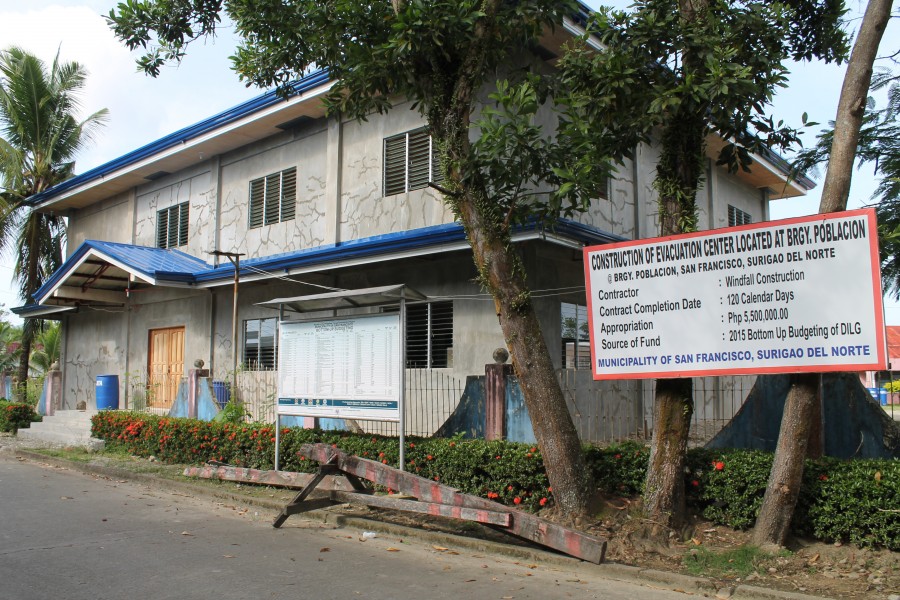“So tell me what you want, what you really, really want…”
It’s not often that you find yourself siting in a café in Manila listening to someone quoting the Spice Girls to describe their technology-driven project for transparency and accountability.
But there I was, a few weeks ago, meeting with the Union of Local Authorities of the Philippines (ULAP), a Making All Voices Count partner. Through an afternoon in the city’s busy Technohub, they told me that this Spice Girls mantra drove their conversations with local government officials and citizens, about how ordinary people can monitor and give feedback on local projects that are paid for by the government’s new participatory budgeting process.
They asked: what is it that government officials want to know from citizens?; What are the key issues that national and local government needs to inform ordinary people about?; What does everyone really, really want to know about how local budgets are being spent?
And then ULAP went and designed the entire project with them…
But first things first - what triggered this project to begin with?
When the Philippines became part of the Open Government Partnership in 2011, one of its core commitments was Bottom Up Budgeting (BuB). BUB is a national initiative that supports local development by allocating funds to more than 1500 local government units. It also requires grassroots organisations to identify, prioritise and monitor projects where BuB money is spent.
But there has been a worrying trend of BuB projects not being completed: ULAP told me that across the country in 2013, 79% of these BuB-funded projects were completed. In 2014, the completion rate dropped to 48%, while in 2015 this dropped to only 12%.
This prompted them to ask themselves, why was completion going drastically low?
Design thinking and co-creating: the story of a project that kept changing
Since Bottom Up Budgeting itself is based on the idea of bringing local government, civil society and citizens together, ULAP built on this model to develop their project.
Starting in three provinces, the ULAP team went to public meetings and talked to mayors and local officials to find out why BuB projects were not completed; they organised design-thinking workshops to figure out what solutions it could bring in to help the monitoring and implementation process.
The Almanac
One of the main problems coming to light was the reporting and auditing requirements. BuB projects are administered by more than 13 different ministries – each with a different reporting template.
If I am an engineer or an accountant, I spend more time complying with the reporting templates than actually going in the field to do monitoring. – Czarina Medina-Guce, ULAP Executive Director
The team began to understand that the prescriptive templates, the time they took to fill out and submit, and the complexities of what each project had to understand about the needs of the various ministries, was a far bigger problem than any logistical issue in delivering the projects. They began working on an Almanac, typing in, simplifying and combining templates (agreed with the Ministries) and providing a single, consolidated reference point that made it easier, and less time-consuming for project teams to complete their reporting.
Today, ULAP’s Almanac is broadly considered the mother document of all reporting documents and has been taken on board not only by the local and provincial government but also by the country’s national government.
The Hotline
Initially, the project aimed to identify new ways to make the BuB process more accessible and open– so that more people could monitor and follow how BuB funds were being spent. The project wanted to explore the role of applications and SMS in combination with offline face-to-face approaches to deepen engagement.
But, ULAP was prepared to have their ideas challenged. During the design thinking workshops, it became visible that the plan for an application or an online tool would be impossible because of the lack of internet connectivity in many rural areas – while The Philippines is known as the ‘selfie capital of the world’ (see this Connectivity vs Connection blog), its thriving online community does not include everyone, especially not in rural areas. Many websites - including the government’s own open data sites – don’t load outside of major cities. (see this ‘Does e-governance really mean e-inclusion’ blog)
ULAP asked for ideas from the people who they wanted to help engage with BuB: the entire idea of the hotline was theirs. So a toll-free hotline was established, along with a travelling kiosk from where people could call, helping people to register their questions and complaints around unfinished projects.
Already set up in ULAP’s three piloting provinces, the idea of a national hotline, that will serve the entire country, is now on the table.

Monitoring the construction of a BuB funded evacuation centre in Surigao del Norte. Photo: Anastasia-Areti Gavrili/MAVC
The needs of ordinary people & the possibilities of technology
Thinking like a designer can transform the way organisations develop tools, services and strategies, bringing together what is desirable from a human point of view with what is technologically feasible.
Of course, using a design thinking approach in transparency and accountability initiatives requires donors who are willing to support projects that might not have all the answers right away and are likely to keep adapting and changing.
In the Philippines, it’s great to open up information on what government is doing and tell people how they can get involved, but if this isn’t the information they want – and if it’s not through platforms they really can access – it won’t work.
That’s where ULAP’s commitment to design thinking is starting to give people what they really, really want.